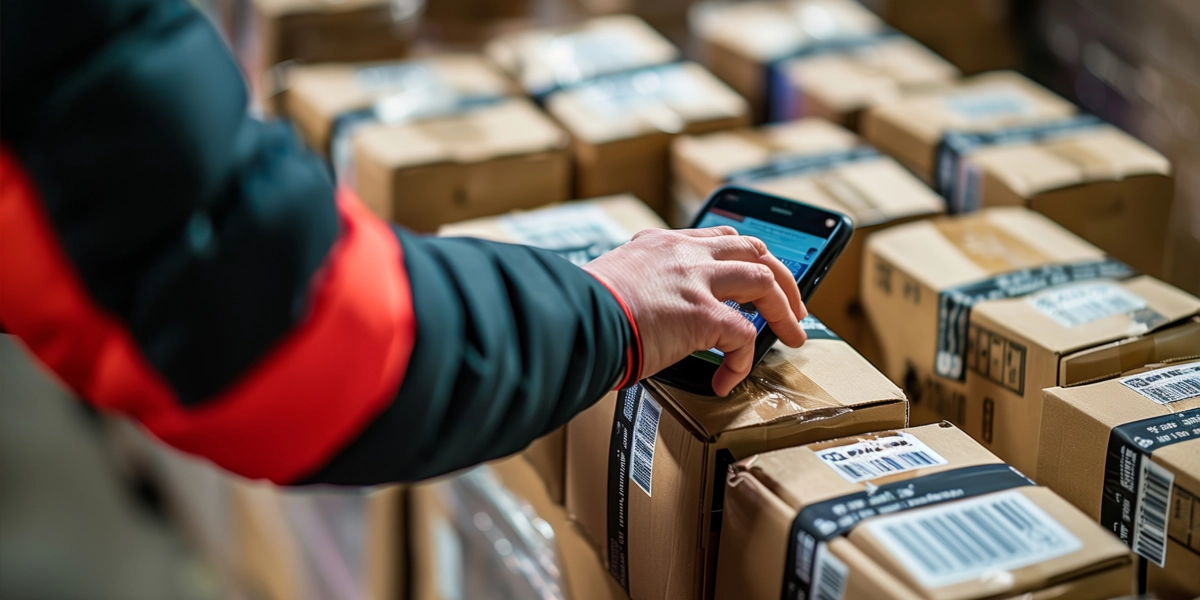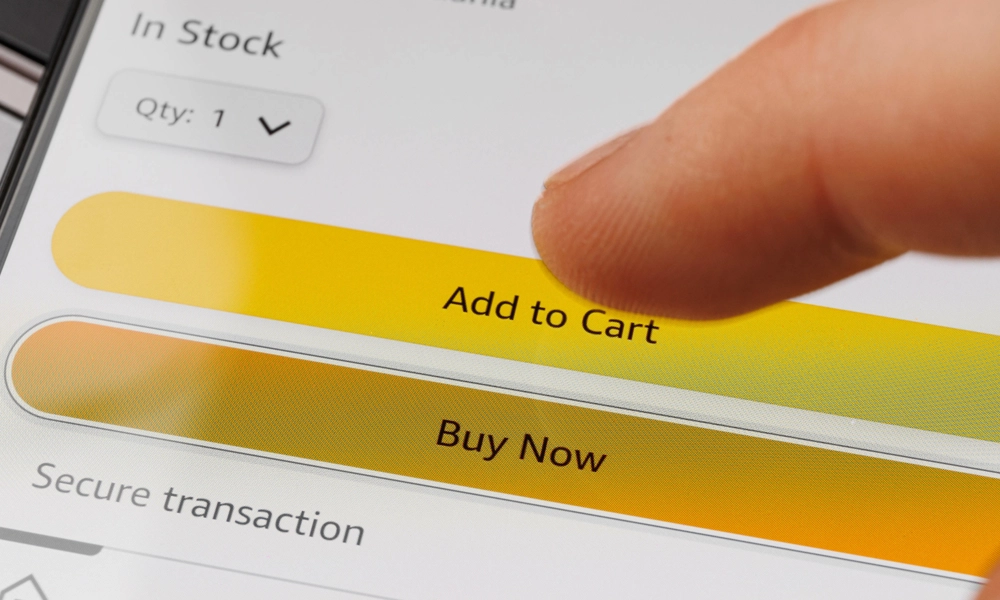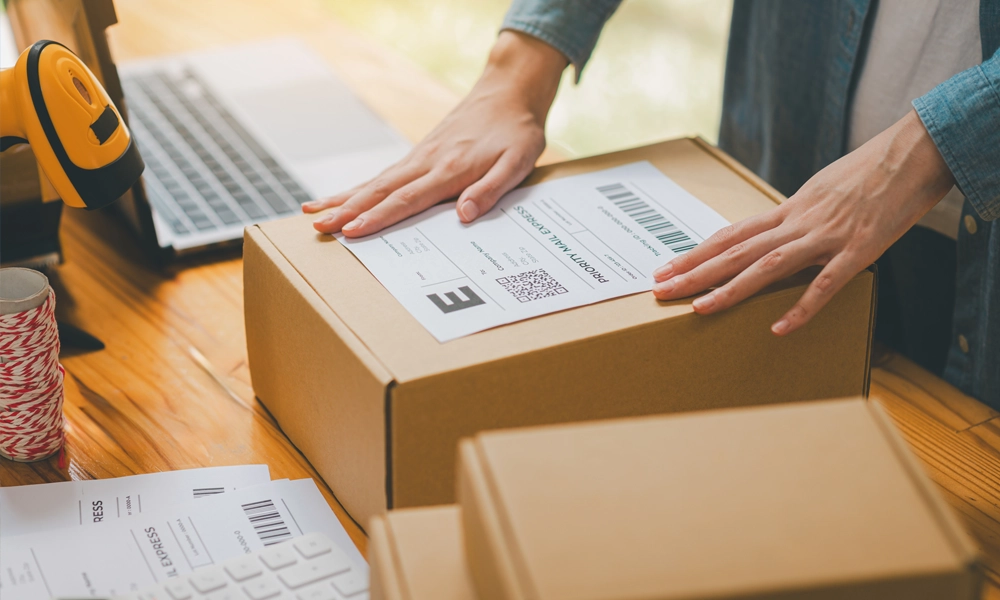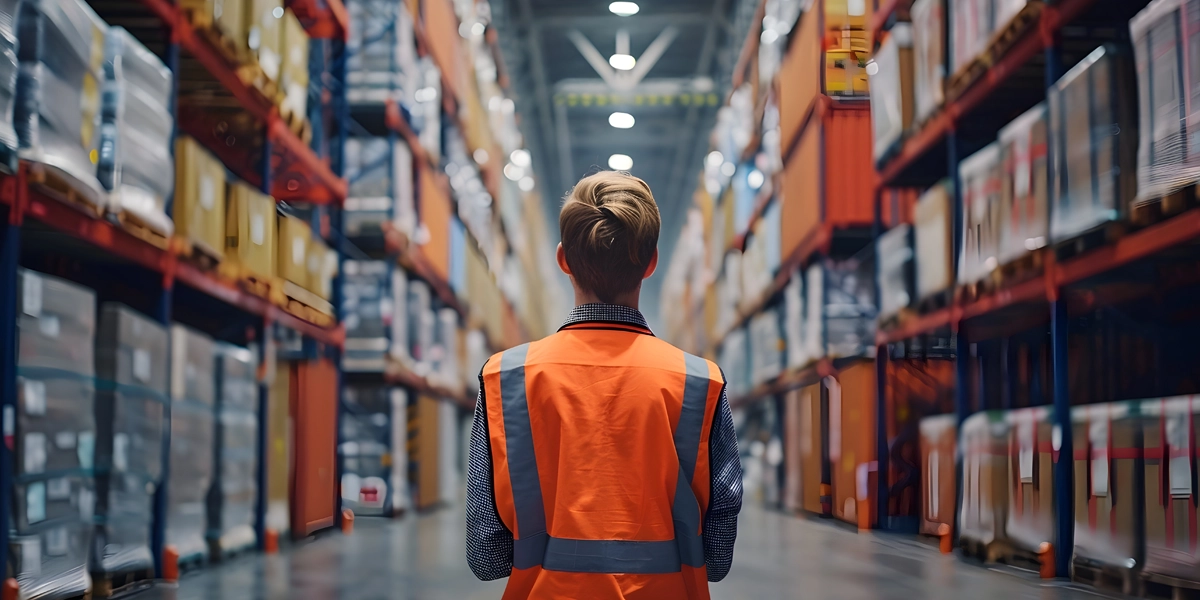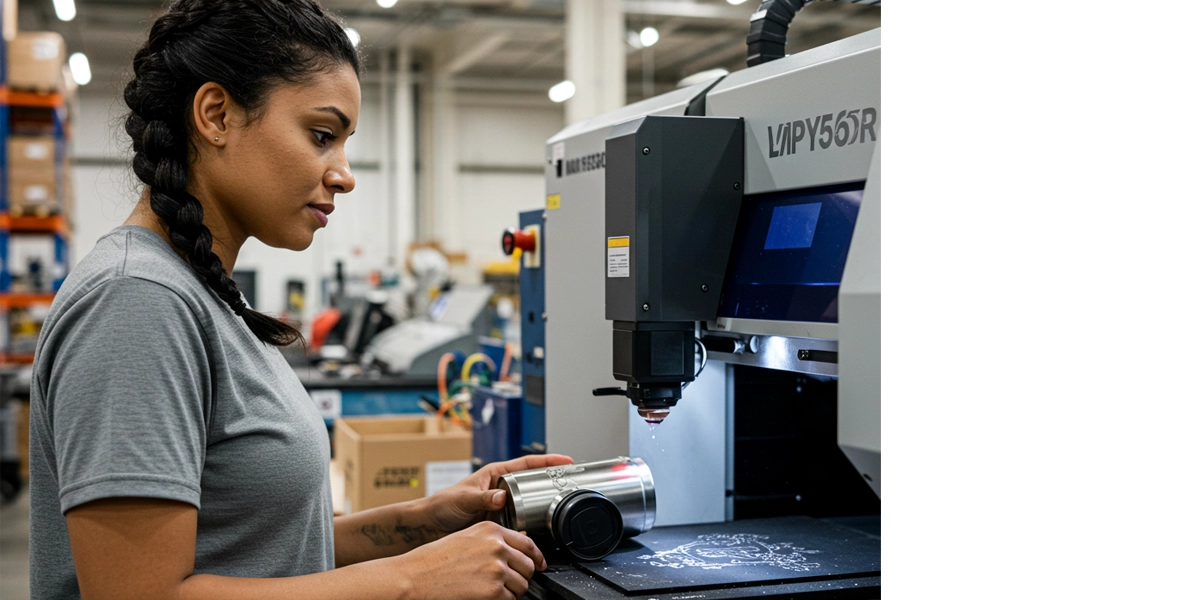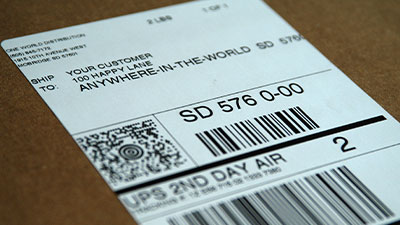In This Article:
It’s tough for independent ecommerce retailers. Giants like Amazon and Walmart have a familiar brand name, infrastructure, and services that are hard to compete with. For third-party logistics (3PL) providers, the pressure is on. You’ll have to be savvy and partner with a capable 3PL to help you compete with Amazon Standard with comparable same-day shipping, hassle-free returns, and live tracking. Amazon and Walmart have raised the bar in ecommerce logistics, and you’ll need to, too.
This article explores practical strategies for 3PLs looking to compete in this challenging market. You’ll find seven often-overlooked tactics that can enhance your services and keep your business in contention against these retail giants. From investing in cutting-edge logistics technology to providing customized fulfillment solutions, we discuss how you can exceed the Amazon Standard without excessive costs.
Understanding the Amazon Standard
There’s a reason why Amazon sales encompass 37.6% of US ecommerce spending. The “Amazon Standard” is the pinnacle of excellence in logistics. Amazon has always gone beyond what modern consumers expect, offering unmatched services and convenience for shoppers.
Defining the Amazon Standard
The Amazon Standard represents efficiency and customer satisfaction in logistics. It sets a high standard with key features that have become industry norms:
- Same-day and next-day shipping: Rapid delivery capabilities that redefine convenience for consumers. 1 in 3 Americans (148 million people) have a Prime membership and can receive FREE two-day, one-day, or even same-day shipping on eligible items.
- Effortless returns: Streamlined processes ensure hassle-free returns and enhance customer satisfaction. Amazon’s return rate is between 5-15% (while the average return rate for ecommerce is between 20-30%). Their exceptional returns management processes and infrastructure allow customers a variety of options to return goods while keeping costs down, such as providing customers with convenient return options like in-store drop-offs to encourage returns through their network rather than external shipping services.
- Real-time order tracking: Providing transparency and peace of mind from purchase to delivery. Customers can see the location of their package, estimated delivery time, and any delays. Amazon Logistics provides sellers with data and analytics to help optimize their shipping and delivery processes for superior fulfillment.
Amazon's Astounding Revenue and Ecommerce Dominance
Amazon’s impact on the logistics industry is monumental. Amazon’s net revenue increased by over $40 billion year-on-year, from $513.98 billion in 2022 to $554.02 billion in 2023 and continues to climb. Every second, Amazon generates $4,722. Each minute, $283,000 and every hour, 17 million.
The majority of sellers (85%) utilize Fulfillment by Amazon (FBA). However, around 80% of Amazon sellers venture to other ecommerce platforms to diversify their business. The increase in competition and rise of private-label brands force brands to expand their reach along with other hurdles working with Amazon.
Challenges of Working with FBA
Navigating the complexities and costs of Fulfillment by Amazon (FBA) can severely cut into seller profits and cause massive frustrations. The stringent packaging, labeling, and shipping requirements are just the starting point. Sellers must align with Amazon’s rigorous standards, which often necessitate significant changes in logistics operations. The process can be intricate and demanding, making it crucial to understand the operational hurdles involved.
1. High Fees
High fees associated with FBA services are another major consideration. While FBA offers unparalleled access to Amazon’s vast customer base, it does come at a cost. Sellers face charges for storage, fulfillment, and additional services like long-term storage fees. These expenses can quickly add up, impacting profitability.
2. Limitations on Inventory Management and Seller Control
The limitations on inventory management and seller control present further challenges. With FBA, sellers relinquish a degree of control over their inventory. Amazon dictates how products are stored and shipped, which can lead to issues such as stranded inventory or mismanaged stock levels. Sellers must maintain precise coordination to avoid penalties or disruptions in service.
A 3PL partner can offer more flexible solutions tailored to specific needs, often providing greater control over inventory management while mitigating some of the logistical difficulties associated with FBA.
How Walmart Became a Major Player in Ecommerce
Walmart is no longer just a brick-and-mortar player. They’ve become a strong competitor in the online retail industry, going head-to-head with Amazon. By expanding into ecommerce and using its physical stores as a foundation, Walmart has created a successful online marketplace. This change has been driven by investments in technology and the introduction of programs like Walmart+, which is similar to Amazon’s Prime membership and offers benefits such as free delivery and discounts on fuel.
Why Retailers Are Choosing Walmart
Retailers are increasingly interested in selling through Walmart’s platform because of its advantages over other options:
- Fast Shipping: Retailers can use Walmart’s logistics network to provide quick shipping, meeting consumer expectations set by Amazon.
- In-Store Pickup Options: This feature combines the convenience of online shopping with the ability to pick up items at physical stores, improving the customer experience and bringing more people into stores.
Opportunities for Smaller Brands
Walmart’s marketplace has less competition compared to Amazon, giving newer or smaller brands a chance to grow their presence. By partnering with platforms like Shopify, Walmart makes it easy for third-party sellers to list their products and reach its large customer base.
Challenges of Working with Walmart Marketplace
Navigating the Walmart Marketplace presents several challenges, mainly due to its stringent seller requirements.
Strict Seller Requirements
As a seller, you must adhere to Walmart’s rigorous standards, which can be daunting but are critical for maintaining product quality and customer satisfaction. These requirements often include:
- Maintaining competitive pricing
- Adhering to specific shipping and fulfillment guidelines
- Ensuring high-quality product listings
Non-compliance can lead to reduced visibility or even removal from the platform.
Complex Inventory Management
Inventory management is another significant hurdle. Sellers are expected to keep their inventories updated in real time, a task that becomes complex without robust systems in place. This complexity is exacerbated by Walmart’s focus on efficiency and speed—your products must always be ready for quick dispatch to meet consumer expectations.
Visibility Challenges
Visibility is equally challenging within the marketplace. With the vast number of sellers and products vying for attention, achieving prominence requires strategic listings and SEO optimization. Sellers need to ensure that their products stand out with detailed descriptions, high-quality images, and customer reviews.
 To succeed on Walmart Marketplace, sellers need to be prepared. Investing in advanced inventory management systems can mitigate pitfalls associated with marketplace limitations and enhance operational efficiency. Adapting quickly to Walmart’s evolving guidelines ensures you maintain compliance while maximizing your listing potential.
To succeed on Walmart Marketplace, sellers need to be prepared. Investing in advanced inventory management systems can mitigate pitfalls associated with marketplace limitations and enhance operational efficiency. Adapting quickly to Walmart’s evolving guidelines ensures you maintain compliance while maximizing your listing potential.
This landscape demands agility and precision; however, those who master these elements unlock access to a vast customer base eager for diverse product offerings at competitive prices.
How 3PLs Can Compete with Amazon and Walmart: 7 Underrated Tactics
1. Invest in Advanced Logistics Technology
Competing with Amazon and Walmart requires a strong focus on technological innovation. One of the most important things you can do is invest in advanced logistics technology. Using a powerful Warehouse Management System (WMS) and incorporating AI-driven logistics solutions can significantly improve your operations, lower fulfillment expenses, and make your clients happier.
Importance of Advanced WMS and AI Solutions
- Efficiency Boost: A sophisticated WMS streamlines operations, enabling real-time inventory tracking, order processing, and shipment management. This level of automation reduces manual errors, improves warehouse picking accuracy and speed, and ensures that your fulfillment processes are both swift and reliable.
- AI-Driven Insights: Implementing AI solutions facilitates data-driven decision-making. By analyzing patterns and trends, AI can optimize routes for delivery, predict inventory needs, and even automate repetitive tasks. This predictive capability not only enhances responsiveness but also aligns with the “Amazon Standard” of efficiency.
- EDI Integration: 3PL EDI integration enables smooth electronic data exchange between 3PLs and their customers, streamlining communications and automating logistics operations. This connected system delivers instant updates and precise management of inventory, shipping processes, and order completion. The integration optimizes order handling, resulting in quicker delivery times and enhanced customer contentment. Operational savings generated through these efficiencies can fund growth strategies, propelling your business’s development and achievement.
Benefits of Technological Investment
- Improved Efficiency: Automation tools reduce labor-intensive tasks, freeing up resources to focus on strategic growth areas. The result is a leaner operation capable of handling increased volume without compromising service quality.
- Accuracy in Order Fulfillment: With precise inventory data at your fingertips, you minimize the risk of stockouts or overstock situations. Accurate order fulfillment translates into fewer returns and higher customer satisfaction.
- Enhanced Inventory Management: Real-time tracking capabilities ensure optimal stock levels are maintained across the board. This agility allows for rapid response to market demands, setting you apart from competitors who may struggle with inventory visibility.
By prioritizing technological advancements, 3PLs empower their clients with seamless logistics services that meet—and often exceed—the standards set by industry giants like Amazon and Walmart. This proactive approach to technology not only strengthens your competitive position but also establishes your brand as an industry leader in delivering cutting-edge logistics solutions comparable to big retailers.
2. Offer Flat Rate Shipping Options Through Your 3PL Partner
Competing with Amazon and Walmart as a 3PL requires creative strategies that align with today’s consumer expectations. One effective method is to implement flat rate shipping options. This model can significantly reduce shipping costs for clients by offering predictable pricing structures, making it easier for businesses to manage their budgets and convert visitors.
Why Flat Rate Shipping Works
Flat rate shipping appeals to price-sensitive consumers who prioritize cost transparency over fluctuating shipping fees. By offering a fixed rate, you not only enhance customer satisfaction but also attract a broader audience who might otherwise shy away from variable shipping charges.
Benefits of Flat Rate Shipping
- Cost Predictability: Flat-rate shipping provides a fixed cost structure, eliminating fluctuations based on weight, distance, or dimensions. This ensures budget stability and prevents unexpected shipping costs at checkout.
- Time Efficiency: With flat-rate shipping, businesses save time by avoiding the need to calculate complex shipping costs for each order. This speeds up processing times and improves operational efficiency.
- Cost Efficiency: Flat-rate shipping reduces the complexities of calculating varied shipping fees based on weight and distance, streamlining operations and increasing efficiency.
- Attractive for Heavy Packages: Flat-rate shipping is particularly cost-effective for heavier items, as weight-based pricing can make standard shipping expensive. Providers like OWD incorporate heavy item surcharges into the flat rate, ensuring no surprises in final costs.
- Free Shipping Promotions: Flat-rate pricing makes it easier for businesses to offer free shipping without cutting into profit margins. By predicting costs accurately, brands can integrate free shipping into promotions to boost customer satisfaction and conversions.
- Elimination of Shipping Zones: Flat-rate shipping simplifies logistics by removing the complexity of calculating costs based on geographic regions. This results in a smoother fulfillment process and better customer experience.
Collaborating with Your 3PL Partner
By working closely with your 3PL partner to integrate flat-rate shipping options, you can leverage logistics technology and advanced warehouse management systems (WMS) to optimize shipping processes. Ensuring these systems are aligned allows seamless implementation of flat rate options, keeping your services competitive in the face of marketplace giants like Amazon and Walmart.
3. Facilitate Fast Two-Day Shipping with Your 3PL Provider
Meeting consumer expectations for rapid delivery is crucial in competing with giants like Amazon and Walmart. Quick shipping options, especially two-day delivery, are essential for keeping customers satisfied and loyal.
For 3PLs, logistics technology plays a critical role in enabling these quick turnarounds. Investing in a robust Warehouse Management System (WMS) ensures efficient inventory management and order processing. This technological foundation allows 3PLs to coordinate their operations and keep up with the fast pace required by modern ecommerce.
What can 3PLs do to stay competitive with marketplaces like Amazon and Walmart? The answer lies in using strategically located fulfillment centers. Take OWD as an example: with facilities in California, South Dakota, and Ohio, they offer extensive coverage across the U.S., achieving an impressive 99% reach within two days. These centers enable same-day or overnight shipping, demonstrating how geographical positioning improves delivery capabilities.
85%
of shoppers are more likely to convert when offered 2-day delivery.
A capable 3PL can help you match the speed of big retailers like Amazon and consumers’ expect 2-day shipping everywhere they shop:
- 73% of consumers say fast delivery is a critical ecommerce shopping factor (a 16% increase from 2020)
- 85% of shoppers are more likely to convert when offered 2-day delivery.
- 46% of consumers value fast delivery more since the pandemic.
In 2021 alone, Slow delivery caused 64% of consumers to avoid trying a new retailer and 54% to switch to another business.
You can’t afford not to offer two-day shipping, so make sure the 3PL you partner with can deliver.
4. Provide Product Personalization to Unlock New Profit Center
Competing with Amazon and Walmart as a 3PL requires innovative strategies, and personalized logistics services are a lucrative differentiator and will help your brand stand out. Personalized-to-consumer (P2C) fulfillment enables seamless product customization, offering options like engravings, embroidery, direct-to-object printing, custom packaging, and personalized greeting cards.
Understanding the mindset of a 3PL customer is crucial. For many e-tailers, choosing a fulfillment company is seen as a necessary burden—akin to dental check-ups. It’s a cost they must endure. However, P2C transforms this perception by turning fulfillment into a profit center rather than an expense.
What Is Product Personalization?
Product personalization is the process of customizing products to meet individual consumer preferences. By offering personalized options, brands cater to growing consumer demand for unique and individualized products, creating a more engaging shopping experience.
- Consumers Are Willing to Pay More – Shoppers value personalized items and are often willing to pay a premium for them.
- Increased Social Media Sharing – Customers are more likely to share unique, personalized purchases, providing organic brand exposure.
- Ideal for Gifts – Personalized products make thoughtful and memorable presents, further increasing demand.
- Stronger Brand Loyalty – Customers who feel personally connected to their purchases are more likely to return.
- Competitive Differentiation – Ecommerce is saturated with generic products; personalization sets your brand apart.
High Demand for Personalization Services
- 50% of consumers believe that customized products make ideal gifts/presents. [Source: Deloitte Consumer Review]
- 73% of consumers want personalized product packaging and delivery, and only 40% of brands can actually provide such services. [Source: Deloitte Consumer Review]
- 74% of Gen Zers are interested in personalized products (vs. 67% of Millennials, 61% of Gen Xers, and 57% of Baby Boomers). [Source: Salesforce]
- Consumers are willing to pay, on average, a 25% premium for personalized or customized items. [Source: Forbes]
What Is P2C Fulfillment?
For ecommerce brands offering personalized products, fulfillment isn’t just about logistics—it’s a strategic advantage. Traditional third-party logistics (3PL) providers focus on storage, shipping, and inventory, but Personalized-to-Consumer (P2C) fulfillment transforms fulfillment into a profit-driving service.
Why P2C Fulfillment Matters
- Profit Center, Not Cost – P2C fulfillment turns what was once a logistical cost into a revenue stream. Customization fees are seamlessly passed to the customer, transforming fulfillment into an upsell opportunity.
- Scalability & Efficiency – One World Direct ensures seamless inventory management and order fulfillment, even for personalized items. We handle the production, personalization, and fulfillment while you reap the profits.
- Enhanced Customer Experience – Offering personalized packaging, custom messages, or unique gift options enhances the shopping experience and increases consumer engagement.
- Convenience and Value – Bundling personalization services—such as monogramming, engraving, or custom gift wrapping—adds perceived value and increases average order values.
- Competitive Differentiation – Brands that embrace P2C fulfillment stand out as innovative and customer-focused, using smart upselling strategies to maximize profit margins.
By leveraging product personalization and P2C fulfillment, ecommerce brands can deliver superior online shopping experiences, unlock new revenue streams, and drive long-term business growth.
To compete with Amazon and Walmart as a 3PL, you need to make use of strategic partnerships with carriers to improve your logistics operations. Having a strong partnership with carriers can greatly boost your competitive advantage by negotiating better shipping rates, which in turn allows you to offer more appealing prices to your clients.
Carrier Relationships
Building strong connections with shipping carriers is essential. These relationships enable your 3PL provider to secure favorable pricing structures that lower overall logistics costs. This stands in stark contrast to the often high fees associated with Fulfillment By Amazon (FBA) services, making it a more cost-effective option for your business.
Reverse Logistics and Returns Management
Working with a 3PL that specializes in reverse logistics offers significant benefits:
- Cost Savings: Efficient handling of returns minimizes waste and reduces financial burdens.
- Elevated Customer Experience: Streamlined returns processes improve customer satisfaction and increase positive reviews.
- Sustainable Fulfillment: Implementing sustainable practices in reverse logistics, such as refurbishing or recycling returned products, reduces environmental impact.
By implementing these strategies, you not only improve operational efficiency but also position your business as a flexible competitor against ecommerce giants.
6. Develop Omnichannel Fulfillment Capabilities and Multi-channel Distribution With Your 3PL Partner
Competing with giants like Amazon and Walmart requires a robust omnichannel strategy. Integrating various sales channels is crucial to meeting modern consumer expectations, which demand seamless online or in-store shopping experiences.
Implementing an Omnichannel Strategy
By collaborating with a 3PL partner, you can leverage an advanced order management system and a WMS to ensure smooth coordination across multiple platforms. This allows for real-time inventory visibility and synchronized order processing, which are essential for maintaining efficiency and superior online shopping.
Offering BOPIS (Buy Online, Pick Up In-Store)
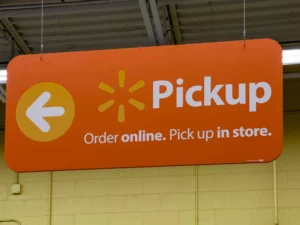 Offering BOPIS options enhances convenience for consumers who prefer immediate product availability without the wait time associated with shipping. A 3PL that supports omnichannel fulfillment can efficiently manage these hybrid models, providing customers with flexibility while reducing shipping costs.
Offering BOPIS options enhances convenience for consumers who prefer immediate product availability without the wait time associated with shipping. A 3PL that supports omnichannel fulfillment can efficiently manage these hybrid models, providing customers with flexibility while reducing shipping costs.
Outsourcing fulfillment services to a reputable 3PL will help you lower expenses while elevating your fulfillment processes. If you are switching 3PLs, make sure to request a demo and walkthrough of their multichannel ecommerce platform to see if it’s a right fit for your team.
7. Prioritize Exceptional Customer Support Through Your 3PL Provider
Competing with Amazon and Walmart requires a strategic focus on customer service excellence. As a 3PL, prioritizing robust customer support helps build loyalty and sets you apart from larger competitors that might lack the personalized attention consumers crave.
Key Benefits of Exceptional Customer Support:
- Customer Loyalty: Strong support systems ensure customer satisfaction, leading to repeat business and brand loyalty.
- Competitive Edge: Smaller providers can distinguish themselves through personalized service that larger companies may not offer.
Partnering with a 3PL that integrates a comprehensive call center is critical. For over two decades, OWD’s call center professionals have delighted clients’ customers across various platforms:
- Omnichannel Customer Solutions: Our career American agents amplify your brand’s personality through phone, email, and live chat.
- Brand Consistency: Consistent messaging across all touchpoints is essential. We train our agents to match your brand voice to provide truly proactive customer service.
95% of consumers stated in a Microsoft State of Global Customer Service report that customer service is essential for brand loyalty, and 60% of consumers report having deserted a brand and switched to a rival company because of lackluster customer service. Whether a shopper needs help with a damaged return or has a question they need answered by a trained professional, ecommerce customer service is a secret weapon of independent retailers.
Beat Amazon and Walmart with the Help of OWD!
One World Direct (OWD) stands out as an appealing choice for businesses looking for a tailored, hands-on fulfillment experience. Since 1994, OWD has focused on building the top 3PL for D2C and B2B brands.
Services Offered by One World Direct
Here are some of the key services offered by One World Direct:
- International Fulfillment: Supports D2C and B2B ecommerce brands with global reach and Delivered Duty Paid (DDP) options, ensuring seamless cross-border deliveries.
- Personalized-to-Consumer Fulfillment: Provides in-house product customization options that boost revenue and enhance customer appeal.
- Call Center Services: Facilitates comprehensive contact center support via phone, email, and live chat, leveraging over 20 years of expertise in ecommerce customer service.
- Fast Nationwide Shipping Solutions: With three strategically located fulfillment centers, OWD can fulfill orders on the same day and reach 99% of the U.S. population within two days when shipping from all three facilities.
Key Features Distinguishing OWD from Competitors
Several aspects set OWD apart from competitors like ShipBob:
- Free Personalization Plugins: Seamless integration with shopping carts allows for easy personalization at checkout.
- Transparent Billing: Invoices are detailed by line item with custom reports available for reconciliation.
- Superior Customer Service: Dedicated account managers ensure seamless communication and exceptional client support.
Schedule a logistics consultation with one of our personalization experts to discover how you can start lowering fulfillment expenses while opening new profit centers for your business.
In This Article:
Subscribe to our Newsletter
Tincidunt urna mauris eu quam vulputate lobortis sit. Purus feugiat arcu nunc quisque massa ut.
